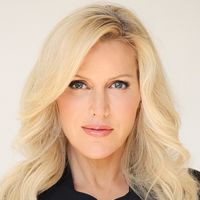Editor’s note: Kimberly Foss is a longtime columnist for Rethinking65. Read more of her articles here.

The IRS is giving advisors another good reason to be talking to clients nearing retirement. On November 1, the service announced the 2025 contribution limits for 401(k) and 403(b) defined contribution plans: Plan participants can contribute up to $23,500 in 2025, up from $23,000 in 2024. And in 2025, in addition to the existing $7,500 catchup provision for persons 50 and older, SECURE 2.0 allows an additional catchup contribution of $3,750 for those ages 60 to 63. So, your clients in their early sixties who are contributing to 401(k)s, 403(b)s, 457s, and federal government Thrift plans can sock away as much as $34,750 in 2025.
The new, higher catch-up provisions are especially worth highlighting with clients in these age brackets. This extra savings can make a big difference in their last few years before retirement.
Supersaver Possibilities
For example, a 62-year-old client who stacks the maximum catch-up contribution to her 401(k) account on top of a maximum regular contribution can put away an extra $11,250 during each of the roughly five years until she reaches full retirement age (FRA). This will give her an additional $65,900 at retirement, if we assume an average 8% rate of return.
For a 60-year-old client who plans to work until FRA (age 67), those extra catch-up contributions could add another $100,300 to the retirement next egg. That’s assuming that the catch-up contribution remains the same from now until FRA. And that is unlikely — and therefore perhaps a conservative estimate — since the IRS typically adjusts for inflation.
And let’s not forget about the folks between ages 50 and 60 who are eligible for the $7,500 catch-up contribution (which remains unchanged in 2025). We need to be coaching them to beef up their employer-sponsored plan balances as much as possible between now and retirement.
We Can Make a Difference
As advisors, we need to be sharing this information with our clients who are in the retirement glide path. While putting tax deferrals to work for retirement savings is a fundamental of most retirement planning, it’s also true that consistent winners never stop working on the fundamentals.
There is also a lot of room for improvement in teaching these basics. According to a recent survey by CNBC, 4 in 10 American workers are running behind in their retirement savings. The situation is even more dire based on a recent Bankrate survey: 57% of full-time, part-time and unemployed workers who responded said they are behind on retirement savings. And according to Vanguard’s “How America Saves 2024” report, only 14% of employees made the maximum contribution to their tax-advantaged employer accounts.
So, even though leveraging tax-advantaged accounts is foundational to a well-funded retirement, it’s clear that not many Americans are getting the full benefit of their advantages.
Don’t Ignore ‘Lifestyle Creep’
We also need to remind our clients that building extra savings in the five or so years before retirement can be crucial for assuring the quality of their retirement lifestyle. These are the years when most clients are at the peak of their earning power but also most vulnerable to “lifestyle creep” — the all-too-common tendency to allow our spending to increase along with our discretionary income.
This temptation often become especially acute as we near retirement; that is also the time when most Americans reach their peak income years. When you’ve got more money coming in, it makes it easier to justify that shopping splurge or that deluxe vacation.
But then comes retirement, and our clients’ income — which may have been rising steadily for the past decade — is likely to decline. That’s when the price for lifestyle creep becomes all too apparent.
The best antidote for lifestyle creep is to hold frank conversations with our clients. By reminding them of the importance of “finishing strong” when saving for retirement, we can increase their chances of socking away an extra $5,000 to 10,000 per year instead of succumbing to lifestyle creep.
Downside Protection
Saving those extra dollars now can also provide significant insulation against a sudden market downturn in the early years of retirement. That’s when drawing income from a shrinking asset base can do major damage to a retirement spending plan. Your clients may also need extra funds for paying off that last bit of debt as they retire.
In other words, giving their retirement plans that last, extra “kick” can make an outsized difference in clients’ ability to go into retirement with confidence.
Kimberly Foss, CFP®, CPWA, is a senior wealth advisor with Mercer Advisors, practicing in the Sacramento Valley area. The opinions expressed by the author are her own and are not intended to serve as specific financial, accounting or tax advice. Examples are for illustrative purposes only. Client experiences will vary, successful outcomes are not guaranteed. Mercer Global Advisors Inc. is registered with the SEC and delivers all investment-related services. Mercer Advisors Inc. is a parent company of Mercer Global Advisors Inc. and is not involved with investment services. Click here for a full disclaimer.







